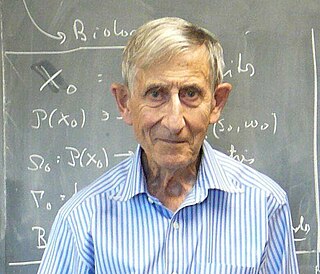
A Dyson sphere is a hypothetical megastructure that encompasses a star and captures a large percentage of its solar power output. The concept is a thought experiment that attempts to imagine how a spacefaring civilization would meet its energy requirements once those requirements exceed what can be generated from the home planet's resources alone. Because only a tiny fraction of a star's energy emissions reaches the surface of any orbiting planet, building structures encircling a star would enable a civilization to harvest far more energy.
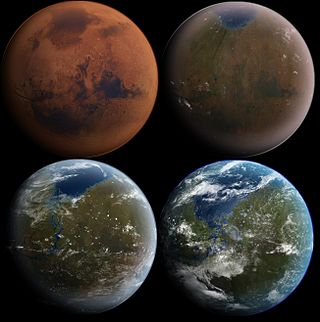
Terraforming or terraformation ("Earth-shaping") is the hypothetical process of deliberately modifying the atmosphere, temperature, surface topography or ecology of a planet, moon, or other body to be similar to the environment of Earth to make it habitable for humans to live on.

A space habitat is a more advanced form of living quarters than a space station or habitation module, in that it is intended as a permanent settlement or green habitat rather than as a simple way-station or other specialized facility. No space habitat has been constructed yet, but many design concepts, with varying degrees of realism, have come both from engineers and from science-fiction authors.

An overwhelming majority of fiction is set on or features the Earth, as the only planet home to humans. This also holds true of science fiction, despite perceptions to the contrary. Works that focus specifically on Earth may do so holistically, treating the planet as one semi-biological entity. Counterfactual depictions of the shape of the Earth, be it flat or hollow, are occasionally featured. A personified, living Earth appears in a handful of works. In works set in the far future, Earth can be a center of space-faring human civilization, or just one of many inhabited planets of a galactic empire, and sometimes destroyed by ecological disaster or nuclear war or otherwise forgotten or lost.
Orion's Arm is a multi-authored online science fiction world-building project, first established in 2000 by M. Alan Kazlev, Donna Malcolm Hirsekorn, Bernd Helfert and Anders Sandberg and further co-authored by many people since. Anyone can contribute articles, stories, artwork, or music to the website. A large mailing list exists, in which members debate aspects of the world they are creating, discussing additions, modifications, issues arising, and work to be done.
A matrioshka brain is a hypothetical megastructure of immense computational capacity powered by a Dyson sphere. It was proposed in 1997 by Robert J. Bradbury (1956–2011). It is an example of a class-B stellar engine, employing the entire energy output of a star to drive computer systems. This concept derives its name from the nesting Russian matryoshka dolls. The concept was deployed by Bradbury in the anthology Year Million: Science at the Far Edge of Knowledge.

An Alderson disk is a hypothetical artificial astronomical megastructure, like Larry Niven's Ringworld and the Dyson sphere. The disk is a giant platter with a thickness of several thousand miles. The Sun rests in the hole at the center of the disk. The outer perimeter of an Alderson disk would be roughly equivalent to the orbit of Mars or Jupiter. According to the proposal, a sufficiently large disk would have a larger mass than its Sun.

A megastructure is a very large artificial object, although the limits of precisely how large vary considerably. Some apply the term to any especially large or tall building. Some sources define a megastructure as an enormous self-supporting artificial construct. The products of megascale engineering or astroengineering are megastructures. The lower bound of megastructural engineering might be considered any structure that has any single dimension 1 megameter (1000 km) in length.
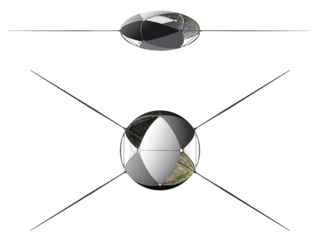
Globus Cassus is an art project and book by Swiss architect and artist Christian Waldvogel presenting a conceptual transformation of planet Earth into a much bigger, hollow, artificial world with an ecosphere on its inner surface. It was the Swiss contribution to the 2004 Venice Architecture Biennale and was awarded the gold medal in the category "Most beautiful books of the World" at the Leipzig Book Fair in 2005. It consists of a meticulous description of the transformation process, a narrative of its construction, and suggestions on the organizational workings on Globus Cassus.
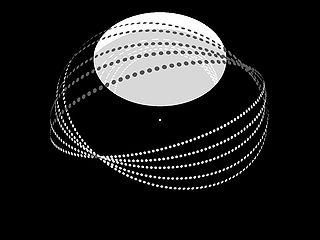
Stellar engines are a class of hypothetical megastructures which use the resources of a star to generate available work. For instance, they can use the energy of the star to produce mechanical, electrical or chemical work or they can use the impulse of the light emitted by the star to produce thrust, able to control the motion of a star system. The concept has been introduced by Bădescu and Cathcart. The variants which produce thrust may accelerate a star and anything orbiting it in a given direction. The creation of such a system would make its builders a type-II civilization on the Kardashev scale.

A Dyson tree is a hypothetical genetically engineered plant capable of growing inside a comet, suggested by the physicist Freeman Dyson. Plants may be able to produce a breathable atmosphere within the hollow spaces of the comet, utilising solar energy for photosynthesis and cometary materials for nutrients, thus providing self-sustaining habitats for humanity in the outer solar system analogous to a greenhouse in space, a shell grown by a mollusc or the actions of thermogenic plants, such as the skunk cabbage or the voodoo lily.
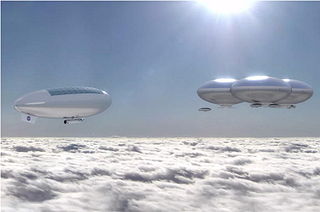
The colonization of Venus has been a subject of many works of science fiction since before the dawn of spaceflight, and is still discussed from both a fictional and a scientific standpoint. However, with the discovery of Venus's extremely hostile surface environment, attention has largely shifted towards the colonization of the Moon and Mars instead, with proposals for Venus focused on habitats floating in the upper-middle atmosphere and on terraforming.

The terraforming of Mars or the terraformation of Mars is a hypothetical procedure that would consist of a planetary engineering project or concurrent projects, with the goal to transform Mars from a planet hostile to terrestrial life to one that can sustainably host humans and other lifeforms free of protection or mediation. The process would involve the modification of the planet's extant climate, atmosphere, and surface through a variety of resource-intensive initiatives, and the installation of a novel ecological system or systems.

The terraforming of Venus or the terraformation of Venus is the hypothetical process of engineering the global environment of the planet Venus in order to make it suitable for human habitation. Adjustments to the existing environment of Venus to support human life would require at least three major changes to the planet's atmosphere:
- Reducing Venus's surface temperature of 737 K
- Eliminating most of the planet's dense 9.2 MPa (91 atm) carbon dioxide and sulfur dioxide atmosphere via removal or conversion to some other form
- The addition of breathable oxygen to the atmosphere.

Non-rocket spacelaunch refers to theoretical concepts for launch into space where much of the speed and altitude needed to achieve orbit is provided by a propulsion technique that is not subject to the limits of the rocket equation. Although all space launches to date have been rockets, a number of alternatives to rockets have been proposed. In some systems, such as a combination launch system, skyhook, rocket sled launch, rockoon, or air launch, a portion of the total delta-v may be provided, either directly or indirectly, by using rocket propulsion.
A Bishop Ring is a type of hypothetical rotating space habitat originally proposed in 1997 by Forrest Bishop of the Institute of Atomic-Scale Engineering. The concept is a smaller scale version of the Banks Orbital, which itself is a smaller version of the Niven ring. Like other space habitat designs, the Bishop Ring would spin to produce artificial gravity by way of centrifugal force. The design differs from the classical designs produced in the 1970s by Gerard K. O'Neill and NASA in that it would use carbon nanotubes instead of steel, allowing the habitat to be built much larger. In the original proposal, the habitat would be approximately 1,000 km (620 mi) in radius and 500 km (310 mi) in width, containing 3 million square kilometers of living space, comparable to the area of Argentina or India.
Engineering on an astronomical scale, or astronomical engineering, i.e., engineering involving operations with whole astronomical objects, is a known theme in science fiction, as well as a matter of recent scientific research and exploratory engineering.
The following outline is provided as an overview of and topical guide to Venus:
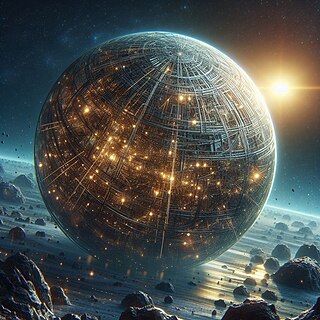
An artificial planet is a proposed stellar megastructure. Its defining characteristic is that it has sufficient mass to generate its own gravity field that is strong enough to prevent atmosphere from escaping, although the term has been sometimes used to describe other types of megastructures that have self-sufficient ecosystems. The concept can be found in many works of science-fiction.












